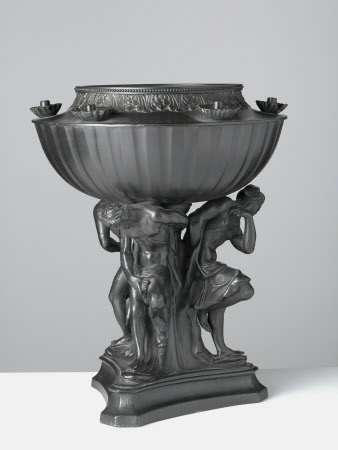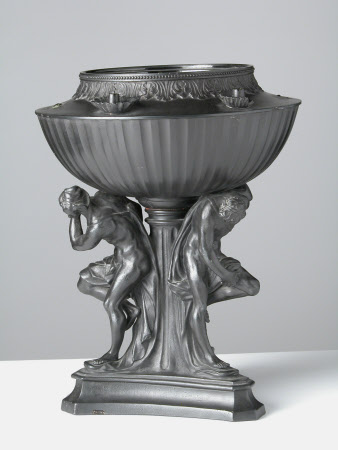Lamp
Wedgwood
Category
Ceramics
Date
c. 1772
Materials
Ceramics, black basalt (stoneware)
Place of origin
Stoke-on-Trent
Order this imageCollection
Stourhead, Wiltshire
NT 730552
Summary
A pair of lamps, black basalt (stoneware), Wedgwood, Stoke-on-Trent, Staffordshire, England, circa 1772. Known as the 'Michelangelo' oil lamp, Shape No. 180, of compressed vase shape based on a Hellenistic bronze lamp of circa 400 BC. The shoulder with six oil burners in shells beneath an acanthus band, engine-turned, supported on three 'Persians' (male caryatids) raised on a tripartite base. The ridged covers (replacements) in the form of a palm. Unmarked. The 'Michelangelo Lamp,' introduced by Wedgwood around 1772, was indirectly based upon figures from a silver-gilt crucifix by Antonio Gentile de Faenza (1531-1609), circa 1582, which had been cast from models by Michelangelo Antonoio Buonarrotti (1475-1564) and, in the eighteenth century, was believed to have been made by Michelangelo. However, it is more likely that Wedgwood copied John Flaxman's casts made by copying William Chambers' drawings in 'A Treatise of Civil Architecture' (1759) where the design was attributed to Michelangelo and had been produced for Matthew Boulton's 'Geographical' clock. There are similar pairs at The Vyne (718619) and Saltram (730552) as well as the Wedgwood Musuem Collection.
Provenance
Pictured in the Entrance Hall at Stourhead in a photograph from Country Life, 1938. Bequeathed by Sir Henry Hugh Arthur Hoare, 6th Bt (1865 – 1947), 1946.
Makers and roles
Wedgwood , manufacturer

